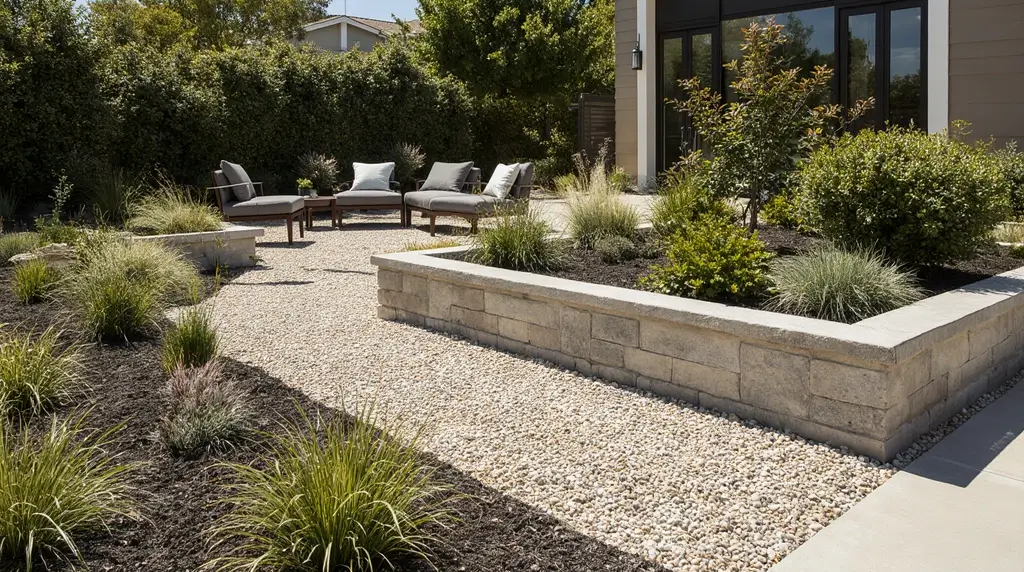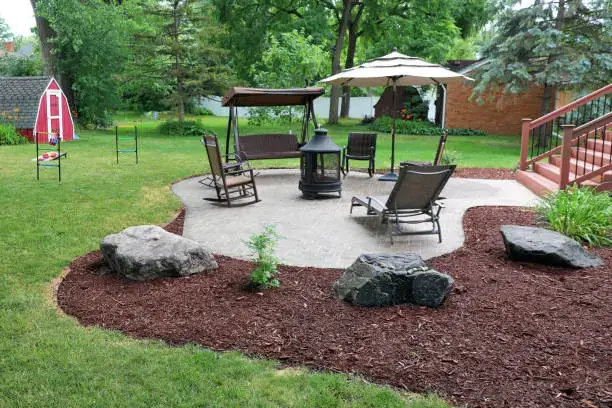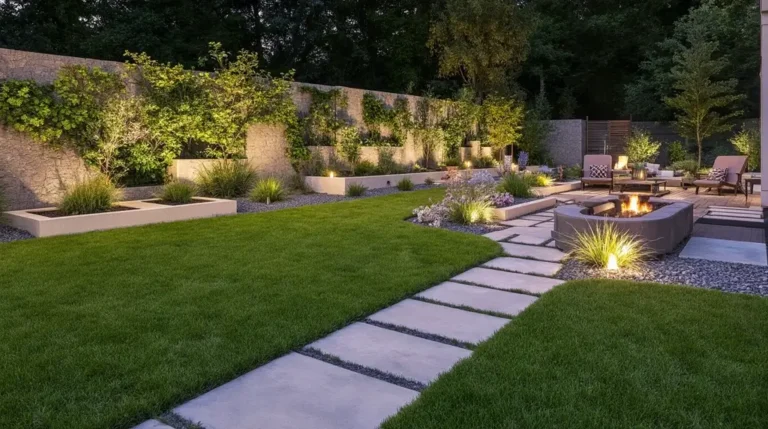Low Maintenance Landscaping for Busy Homeowners now
Table of Contents
Reclaiming Your Weekends – The Joy of a Low-Maintenance Garden
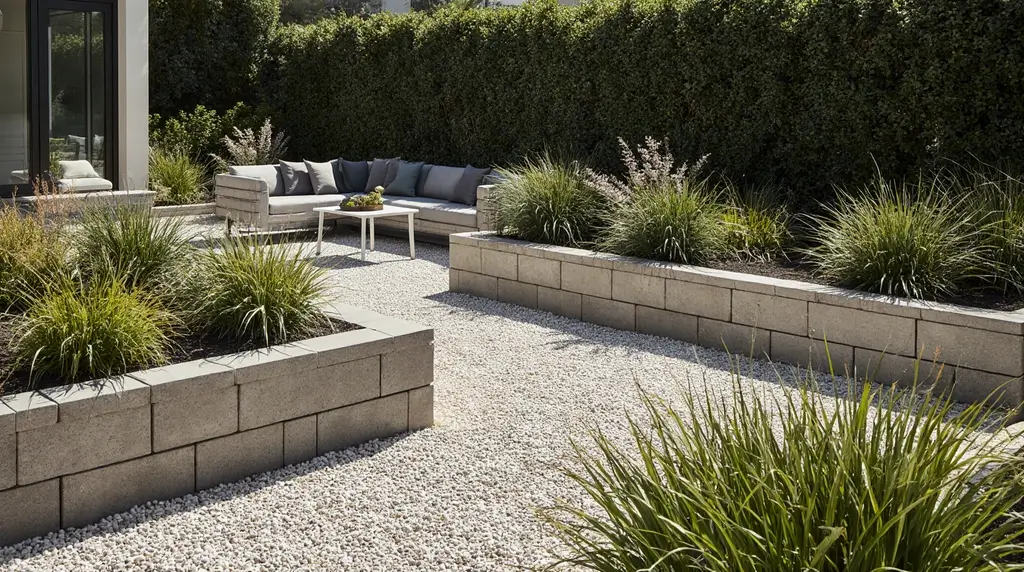
Gardening shouldn’t consume your entire weekend or leave you feeling overwhelmed by endless chores. Low maintenance landscaping trends offers a solution that transforms your outdoor space into a beautiful haven without the constant upkeep. Imagine stepping into your garden and feeling relaxation instead of stress, admiring thriving plants that practically care for themselves. Complete your dream garden with our handpicked Garden Design & Landscaping essentials that make outdoor spaces stylish and practical.
This comprehensive guide will show you how to create an effortless garden through clever easy garden design principles, smart plant choices, and strategic planning. Whether you’re a busy professional, a parent juggling multiple responsibilities, or simply someone who wants to enjoy their outdoor space rather than slave over it, these proven strategies will help you achieve the garden of your dreams with minimal effort.
Key Takeaways: Your Snapshot to an Effortless Garden
- Prioritize native and drought-tolerant plants for natural resilience and minimal care requirements
- Embrace hardscaping elements like patios, gravel paths, and raised beds to reduce maintenance tasks
- Utilize ground covers and mulching to suppress weeds naturally and conserve soil moisture
- Implement efficient irrigation systems with automated timers and soaker hoses to save time and water
- Adopt a “benign neglect” mindset by working with nature’s patterns rather than fighting them
Why Go Low-Maintenance? The Multifaceted Benefits
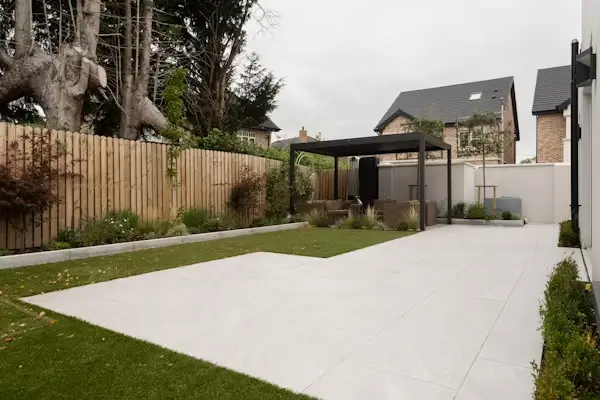
Saves Time & Effort
A well-planned low maintenance landscape dramatically reduces the hours spent on weeding, watering, pruning, and general garden tidying. This means more time for family activities, hobbies, or simply relaxing in your beautiful outdoor space instead of constantly working in it.
Promotes Sustainability & Eco-Friendliness
Drought tolerant landscaping can reduce residential water consumption by 30-80%, making a significant environmental impact. These gardens support local biodiversity by attracting native birds, butterflies, and beneficial insects while reducing dependence on chemical fertilizers and pesticides. By choosing plants adapted to your local climate, you’re creating an ecosystem that works in harmony with nature.
Increased Enjoyment & Reduced Stress
Your garden should enhance your quality of life, not detract from it. Low maintenance landscaping eliminates the guilt of neglected garden beds and replaces weekend stress with peaceful enjoyment of your outdoor sanctuary.
Foundational Design Principles for an Effortless Outdoor Space
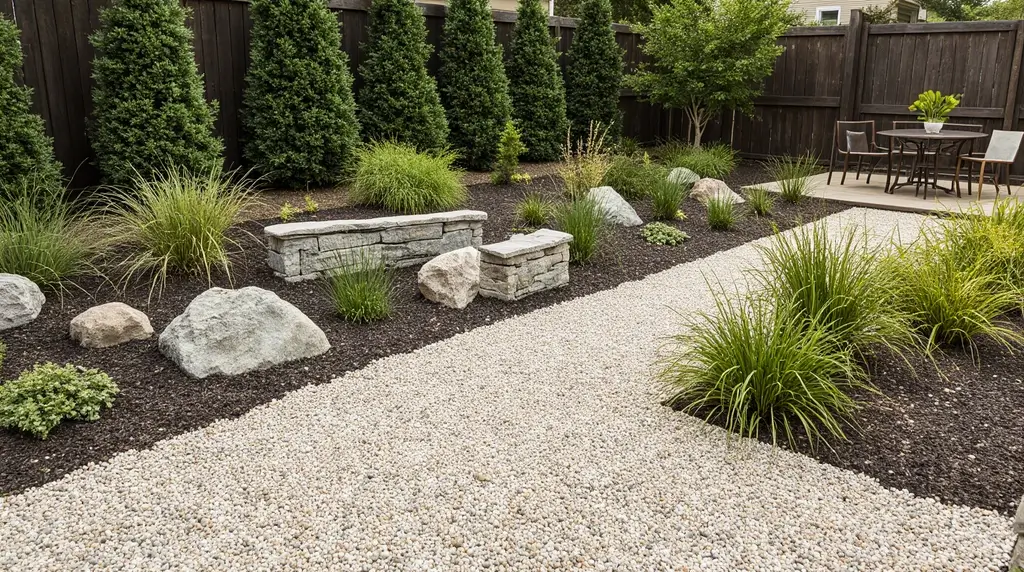
Strategic Site Preparation: The First Step to Success
Creating a successful low maintenance landscape begins with proper site preparation. Start by establishing weed-free growing beds where your chosen plants can thrive without competition. You can achieve this through several methods:
- Tarp method: Cover existing grass or weeds with black tarps for 6-8 weeks to kill vegetation naturally
- Sod cutter approach: Remove existing turf mechanically for immediate planting
- Lasagna mulch technique: Layer cardboard over grass, then add compost and mulch to create rich planting beds over time
This initial investment prevents your new plants from being overwhelmed by aggressive weeds and saves countless hours of future maintenance work.
Embrace Hardscaping & Outdoor Living Areas
Hardscaping reduces the total plantable area while adding functional beauty to your outdoor space. These elements require virtually no maintenance once installed and transform gardens into versatile areas for relaxation and entertaining.
Patios, Decks & Paved Areas: Choose permeable materials that allow water infiltration while providing clean, low-maintenance surfaces for outdoor furniture and activities.
Gravel Gardens & Paths: Excellent for drought tolerant landscaping, gravel suppresses weeds naturally and creates attractive pathways. Unlike traditional lawns, gravel requires no water, fertilizer, or specific sun exposure, making it incredibly versatile.
Rock Gardens: These decorative features add visual interest and structure while reducing plantable space. Once established, they require minimal intervention beyond occasional weeding.
Stone Walls: Retaining walls and decorative stone features require zero irrigation once installed and provide lasting structure to your landscape design.
Consider Artificial Turf
Modern artificial turf eliminates the need for mowing, watering, and constant lawn care. Today’s synthetic grass options feature realistic textures, proper drainage, and durability that makes them nearly indistinguishable from natural grass without the maintenance headaches.
Keep it Structured, Not Overstuffed
Easy garden design relies on defined zones rather than cluttered plant arrangements. Create clear areas for seating, pathways, and planted borders to make your garden feel organized and manageable. Plant fewer varieties in larger groupings for greater visual impact while simplifying care routines.
“Right Plant, Right Place”: Matching Plants to Conditions
Choose plants naturally suited to your specific soil type, light conditions, and climate zone. For example, lavenders thrive in sunny, well-drained locations, while hostas prefer shaded, moist areas. This fundamental principle reduces maintenance time by ensuring plants flourish naturally in their preferred environments.
Intelligent Plant Selection for Minimal Upkeep
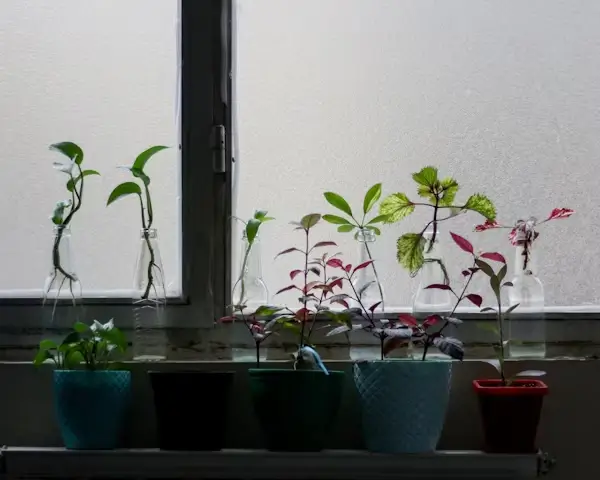
Prioritize Native & Drought-Tolerant Plants
Native plants and drought-resistant varieties form the backbone of successful low maintenance landscaping. These plants develop deep root systems and adapt naturally to local weather patterns, requiring minimal supplemental watering once established.
Succulents: Agave, Aloe, Crassula, Echeveria, Sedum, and Sempervivum store water in their leaves and stems, requiring infrequent watering and minimal pruning.
Ornamental Grasses: Pampas grass, fountain grass, switchgrass, and big bluestem add texture, height, and graceful movement to landscapes. Most varieties are extremely drought-tolerant once established and provide year-round interest.
Drought-Resistant Turf Grasses: Buffalograss, bluebunch wheatgrass, Kentucky bluegrass, tall fescue, Bermudagrass, St. Augustinegrass, and Zoysiagrass establish quickly and survive dry periods by entering natural dormancy.
Native Perennials: Black-eyed Susan, purple coneflower, yarrow, blazing star, common sunflower, and milkweed varieties require minimal care once established while supporting local pollinators.
Evergreen Shrubs & Perennials: Year-Round Interest & Longevity
Evergreen plants provide consistent structure and winter interest while typically requiring less frequent pruning than deciduous varieties.
Recommended Shrubs: Abelia, Pittosporum, fuchsias, inkberry holly, rose of Sharon, landscape roses like Oso Easy Double Red, smooth hydrangea, lilac varieties such as Scentara Pura, St. John’s wort, ninebark Ginger Wine, birchleaf spirea Glow Girl, juniper Tortuga, sweetspire Fizzy Mizzy, and oakleaf hydrangea Gatsby Moon.
Low-Maintenance Perennials: Hardy geraniums like Rozanne and Boom Chocolatta, hebes, hostas such as Shadowland ‘Coast to Coast’, daylilies including Rainbow Rhythm ‘Sound of My Heart’, pinks ‘Paint the Town Fuchsia’, and Russian sage ‘Denim ‘n Lace’.
Embrace Ground Cover Plants: Nature’s Weed Suppressors
Ground covers create dense canopies that block sunlight, naturally discouraging weed growth while conserving soil moisture. These living carpets add lush texture and color with minimal maintenance requirements.
Excellent options include Persicaria bistorta, Ajuga reptans, creeping thyme, sedum varieties, heuchera, monkey grass, vinca minor, clovers, honeysuckle, creeping phlox, and creeping Jenny.
Low-Maintenance Fruits & Vegetables
Incorporate edible plants that provide annual harvests with minimal attention after initial planting. Strawberries, rhubarb, gooseberries, and currants are excellent choices. Consider purchasing vegetable plug plants to save time compared to starting from seeds.
Look for Award-Winning & Reliable Varieties
Choose plants with proven track records of reliability and performance. The RHS Award of Garden Merit (AGM) identifies plants that perform consistently well in ordinary garden conditions. Proven Winners rigorously tests plants for ease of care and reliable performance for home gardeners.
Notable examples include Euphorbia Diamond Collection varieties, Sedum Lemon Coral, and Supertunia Vista petunias.
Smart Strategies for Reduced Maintenance Tasks
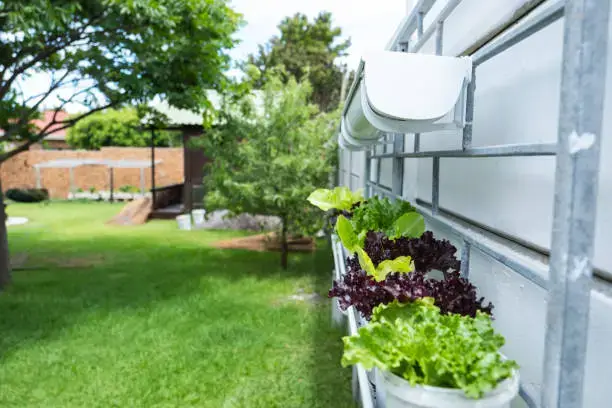
Master Mulching Techniques
Mulching serves multiple functions in low maintenance landscaping: suppressing weeds, retaining soil moisture, moderating soil temperature, and gradually improving soil structure as organic mulches decompose.
Organic Mulches: Bark chippings, wood chips, homemade compost, and straw gradually release nutrients while decomposing, feeding your plants naturally.
Inorganic Mulches: Gravel, lava rock, and rubber mulch reflect heat, last for years, and work particularly well in drought tolerant landscaping designs.
Efficient Watering Systems
Drip Irrigation & Soaker Hoses: These systems deliver water directly to plant roots, preventing evaporation losses and increasing watering efficiency by 20-50%. Combined with automatic timers, they provide consistent moisture without manual effort.
Rainwater Collection: Install rain barrels or cisterns to collect stormwater runoff for sustainable plant watering during dry periods.
Rethink Weeding Methods: Work Smarter, Not Harder
Minimize soil disturbance to prevent dormant weed seeds from germinating. Use these targeted approaches:
Slice Root Method: For biennial weeds, use a sharp spade or garden knife to slice roots at a 45-degree angle below soil level, then pull the weakened plant.
Cut to Base Method: Use garden shears to cut annual weeds at soil level, preventing seed production without disturbing surrounding soil.
Utilize Containers & Raised Beds
Large Containers: These dry out more slowly than small pots, reducing watering frequency while serving as attractive focal points with year-round plantings.
Raised Beds: Elevated growing areas make planting and weeding easier, especially beneficial for elderly gardeners or those with mobility issues. They offer complete control over soil composition for optimal drainage and moisture retention.
Adopting a Low-Maintenance Mindset
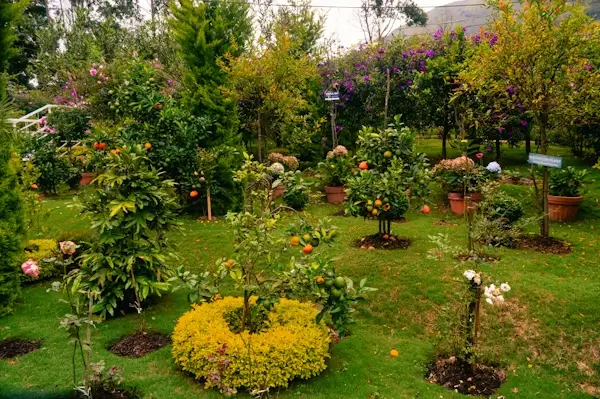
Embrace Benign Neglect & Wildness
Allow plants to self-seed and spread naturally, filling gaps and creating relaxed, naturalistic landscapes. Encourage beneficial insects by providing habitat diversity, supporting natural pest control systems.
Challenge the “perfectly manicured” aesthetic by accepting that low maintenance doesn’t mean no maintenance—it means guiding rather than forcing your garden’s natural development.
Seasonal Strategies for Year-Round Beauty
Incorporate plants providing four-season interest, particularly evergreens that maintain structure during dormant periods. Practice timely pruning in early spring to promote healthy growth without requiring constant intervention throughout the growing season.
Essential Tools & Sustainable Practices
Tailored Tools for Easier Work
Invest in quality tools including durable gloves, sharp pruning shears, loppers for larger branches, hand trowels for planting, and sturdy spades. Proper tool maintenance and storage extend their lifespan and effectiveness.
Compact Composting Solutions
Transform kitchen scraps and yard waste into nutrient-rich soil amendments through simple composting systems. Even small spaces can accommodate compact compost bins that reduce waste while improving soil health naturally.
Your Thriving, Effortless Garden Awaits
Creating a beautiful low maintenance landscaping design is entirely achievable through smart layout decisions, appropriate material choices, and strategic plant selection. By implementing these proven strategies, you can transform your outdoor space from a time-consuming chore into a peaceful sanctuary that enhances your quality of life.
The key to success lies in working with nature rather than against it, choosing plants adapted to your local conditions, and designing spaces that require minimal intervention once established. Your drought tolerant landscaping and easy garden design choices today will pay dividends in reduced maintenance and increased enjoyment for years to come.
Ready to start your low-maintenance garden transformation? Share your garden plans in the comments below, explore our related landscaping articles, or subscribe to our newsletter for weekly tips on creating beautiful, effortless outdoor spaces that work with your busy lifestyle.
Low Maintenance Landscaping for Busy Homeowners now
Gardening shouldn’t consume your entire weekend or leave you feeling overwhelmed by endless chores. Low maintenance landscaping trends offers a solution that transforms your outdoor space into a beautiful haven without the constant upkeep. Imagine stepping into your garden and feeling relaxation instead of stress, admiring thriving plants that practically care for themselves. Complete your dream garden with our handpicked Garden Design & Landscaping essentials that make outdoor spaces stylish and practical.

